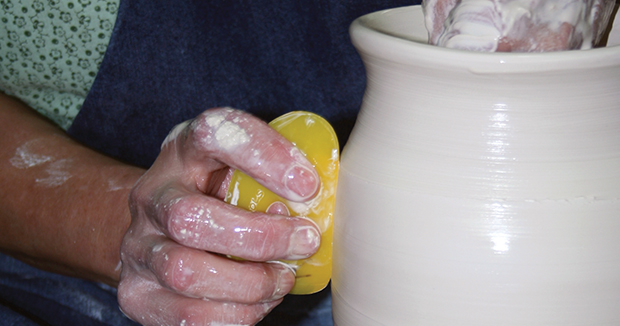Fatigue Cracking Is A Major Issue In Ceramics

The fatigue process in ceramic materials is reviewed.
Fatigue cracking is a major issue in ceramics. This illustrates the importance of understanding the subcritical crack growth behavior of ceramic materials if one aims to estimate the lifetime of structural and load bearing ceramic components. In materials science fatigue is the weakening of a material caused by cyclic loading that results in progressive and localized structural damage and the growth of cracks. Since crack tip shielding from phase transformation crack bridging etc plays a pivotal role in the toughening of many monolithic and composite ceramics it is to be expected that small crack effects will be prevalent in ceramic fatigue. Fatigue crack propagation crack tip shielding metals ceramics intermetallics intrinsic and extrinsic mechanisms.
The fatigue life of a component can be expressed as the number of loading cycles required to initiate a fatigue crack and to propagate the crack to critical size. In our group major efforts have been placed on the prediction of the lifetime of ceramic. Once a fatigue crack has initiated it will grow a small amount with each loading cycle typically producing striations on some parts of the fracture surface. Micro crack propagation behaviors of the plain specimens are compared with those of long cracks and semi elliptical surface cracks.
Finally it is interesting to note that the few studies on cyclic fatigue of ceramics at elevated temperatures seem to indicate that at high homologous temperatures i e in the creep regime cyclic fatigue does not appear to be as damaging as scg or static fatigue. Failure over time does occur in brittle materials however despite the absence ö the crack tip plasticity that is the hallmark of materials known to exhibit fatigue. The crack initiation was observed by the in situ observing system equipped with a scanning laser microscope. The material used in the experiments is pzt 5 a soft pzt with the coercive field e c 900 v mm and the spontaneous polarization p s 0 38 c m 2 the strip shaped specimen for fatigue cracking testing is shown in fig.
Therefore it can be said that fatigue failure occurs in three stages crack initiation. Structural materials however are rarely designed with compositions and. The crack will continue to grow until it reaches a critical size. One category of failure with time in glasses and ceramics known as static fatigue is actually stress corrosion cracking promoted by.
Introduction cyclic fatigue involves the microstructural damage and failure of materials under cyclic ally varying loads. It is shown that there are few cases where fatigue effects have been unequivocally demonstrated. It is not altogether clear that conventional fatigue actually takes place in ceramic materials. Mechanisms pertinent to the substantiated fatigue conditions are presented and discussed.
The need for further definitive experimentation to deduce the realm of fatigue and its dependence on microstructure vis a vis the fatigue models is. Cyclic fatigue and lifetime prediction of ceramics. Fatigue crack initiation and propagation in plain specimens of a sintered si 3 n 4 have been investigated.



















